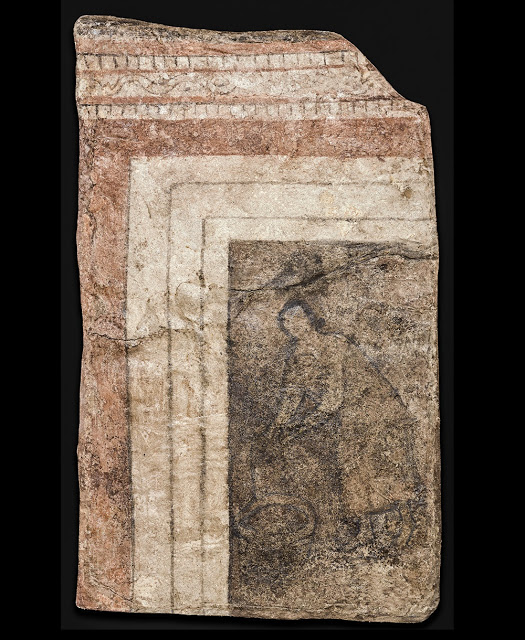At https://archaeologynewsnetwork.blogspot.co.uk/2017/04/can-houses-die-iro… … From the Bronze Age to the Viking Age, roughly a period of almost 3000 years, burial mounds were sometimes placed on top of the remains of burnt long houses. It was a way of getting rid of a house that had grown old and weary, and sometimes internal posts that supported the roof were removed for re-use elsewhere, but generally, it was an act of closure. Why was fire involved – and why was the same period associated with a rise in cremation as a means of disposing of bodies?
The research, in this case, was done in Scandinavia but the same probably applies right across northern Europe. For example, Bronze and Iron Age settlements and farms were burnt and buried in Britain, and a ritual form of closure appears to be quite common – even when a settlement moved down the hill to the river valley below. Even in the Neolithic ritual enclosure and burial beneath a mound was not unknown – and is in fact fairly common. The researcher, in this case, Marianne Eriksen, says that houses that had been abandoned for several hundred years were sometimes burnt down and buried under a mound. A fascinating area of research. However, the fact that fire was involved seems to be regarded as nothing unusual. Indeed, it is not unusual – which is why the fire element may be important.
The article is in the European Journal of Archaeology and discusses whether the ritual burning of a house is comparable to the ritual burning of a dead human, cremation. It has usually been assumed by archaeologists that burnt houses contained dead humans – but their remains are often not found. It is just a house that is cremated – having served its useful life.
Over at https://archaeologynewsnetwork.blogspot.co.uk/2017/04/is-this-oldest-sur… … we learn that a 3rd century ASD house church in Syria was excavated in the 1920s and some bits and pieces were brought back to America. This included wall painting and one of these is kept at Yale University. It depicts Mary the mother of Jesus at the moment of Annunciation. There exist other wall paintings of the Good Shepherd, the Walking on Water miracle, and a healing event. The traditional annunciation story (accepted by the Church Fathers) is in Luke 1:26-38 but the painting reflects a non-canonical version in the Gospel of James where an angel announces the good news to Mary as she holds a pitcher near a well (with the intention of drawing water). It seems that the Gospel of James was regarded as authentic by the Christian communities in Syria – and the site is thought to be the oldest existing Christian sanctuary in the world.

